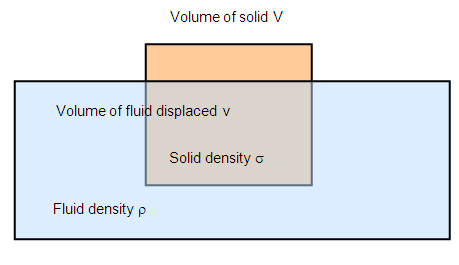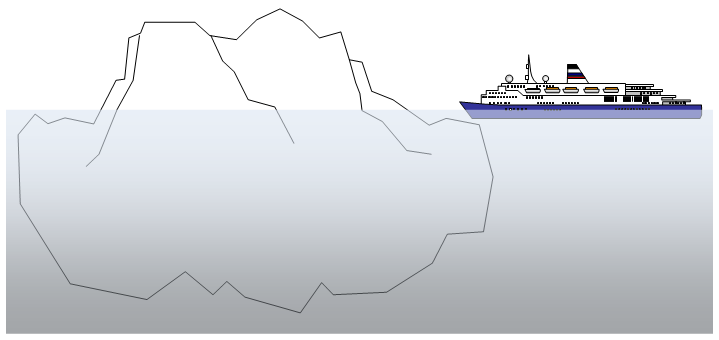Floating and immersion - icebergs
Question:
How does the fraction of the submerged part of a floating object
compare with the ratio of its density and the density of the liquid in which it
floats?
Answer:

The
answer all depends on Archimedes principle. This states that:
When a body is totally
or partially immersed in a fluid there is an upthrust which is equal to the weight of the fluid
displaced.
Therefore if an object is floating the upthrust must equal the weight of the
object.
Therefore:
Volume of displaced fluid (v) x density of fluid x g = Volume of
object (V) x density of object x g

And this
gives:
Volume of displaced fluid x density of fluid = volume of object x density
of object
The ratio that you wanted is then:
Volume of submerged part of
object/volume of object = density of object/density of fluid

Therefore for sea water (density 1100 kg/cubic metre) and ice (920
kg/cubic metre) the ratio is:
920/1100 = 0.84 and so 84% of the ice is below the level of the
water.

A VERSION IN WORD IS AVAILABLE ON THE SCHOOLPHYSICS USB



